Microgreens are becoming increasingly popular, allowing growers the opportunity to expand further into existing markets or to venture into new markets.
From farmers markets to local restaurants and chefs, microgreens are perfect for enhancing salads or using as a garnish. Considered a superfood, microgreens are packed with vitamins and nutrients (on average 40% more than their adult plant).
Most varieties are harvested at 8-14 days and while they may be smaller and more delicate, they are also more robust and flavorful. Below are the varieties of microgreens available for order. Please allow between 2- 4 weeks between order time and delivery.
Amaranth, Anise,
Broccoli, Bulls Blood Beet,
Buckwheat, |
|
Carrot, Celery,
Chervil, Corn Shoots,
Dark Opal Basil, |
|
Parsley, Pea,
Purslane, Radish,
Sunflower, Spicy Mix, |
Wasabi, Cilantro,
Lemon Balm, Lemon Mint,
Mild Micro Mix, Mizuna, |
|
Kohlrabi, Thai Basil,
Sweet Basil, Lemon Basil,
|
|
Fennel, Leek,
Shiso. |
All of our greens are grown to order in soil. We find soil grown produce to have more flavor than the same hydroponically grown produce.
Our greens are grown without the use of fertilizer or pesticides. Only available locally in the New York City area. We harvest and deliver the same day to preserve freshness.
Call us today for pricing!
(212 645-1370)
What's available this week:
| Amaranth |
|
|
|
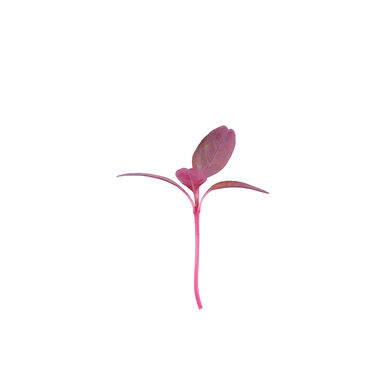 |
|
Amaranth is an ancient variety of grain. "Amaranth" derives from Greek (amárantos), "unfading", with the Greek word for "flower" (ánthos), factoring into the word's development as amaranth, the unfading flower.
Use: In salads or in many oriental dishes
Color: Attractive fuchsia stems and leaves, the most vibrant red and pink of any microgreen!
Flavor: A mild, earthy flavor, sweet flavor
Texture: Crisp and fresh
Nutrients: Vitamins K, E, and C, calcium, iron, and beta-carotenes. Amaranth is high protein; higher that the cereal grains |
|
| |
|
|
|
| Beets |
|
|
|
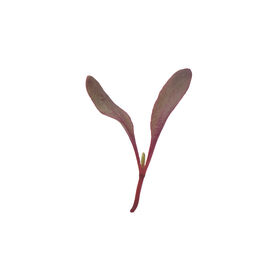 |
|
Beets are a more advanced microgreen but well worth the effort because of its stunning color and bold flavor, the bright stems and leaves look fantastic on any dish! Beet greens are very colorful and flavorful.
Color: Deep burgundy leaves, vibrant red stems with a nearly neon green top
Flavor: Tender, with sweet and earthy, similar flavor to spinach, swiss chard microgreens
Nutrients: Vitamins A, B, C, E, and K, Calcium, Magnesium, Potassium, Iron, Zinc, and protein |
|
| |
|
|
|
| Broccoli |
|
|
|
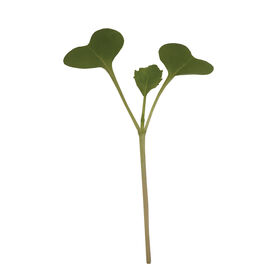 |
|
Broccoli is a hardy and substantial microgreen that has a fresh, mild cabbage flavor. They are also favored for their health benefits and make an excellent choice as a base for any micro greens salad or garnish.
Use: It has a delicious mild, fresh cabbage flavor
Color: Dark soft green leaves with long thin white stem with shades of purple and a green top
Flavor: a strong broccoli flavor
Nutrients: Vitamins A and C, calcium, iron, and phosphorus. Great source of sulforaphane. |
|
| |
|
|
|
| Radish |
|
|
|
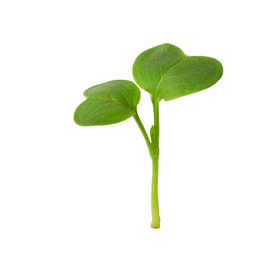 |
|
Radish microgreens are substantial and crunchy and taste exactly like radish. Makes a great addition to any salad, sandwich or garnish. Use sparingly for a radish accent.
Use: Micro radish leaves add spicy flavor, visual appeal, great addition to a mix.
Color: A creamy white stem with a vibrant green top
Flavor: Crisp, fresh and spicy flavor
Shape & texture: Leafy, crunchy, succulent
Nutrients: Vitamins: A, B, C, E, & K, folic acid, niacin, potassium, iron, phosphorus, pantothenic acid, calcium, magnesium, zinc, carotenes. |
|
| |
|
|
|
| Basil |
|
|
|
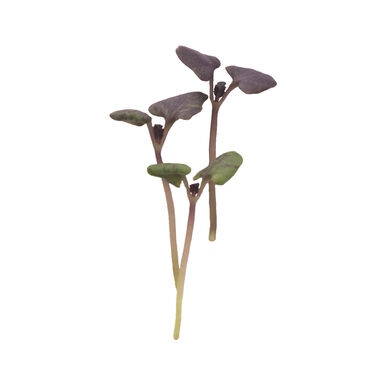 |
|
Basil is a flavorful, leafy green herb that originated in Asia and Africa.
Use: Micro basil is an outstanding choice for caprese, pesto or any recipe that calls for fresh basil. It adds robust, sweet-and-spicy flavor and visual interest to summery cocktails and makes a colorful dessert garnish. A critical ingredient in many Asian dishes, including those of Thailand, Laos, Indonesia, and the Philippines.
Color: purple with some green
Flavor: The flavor of micro basil is a bit more intense than adult basil
|
|
| |
|
|
|
| Peas |
|
|
|
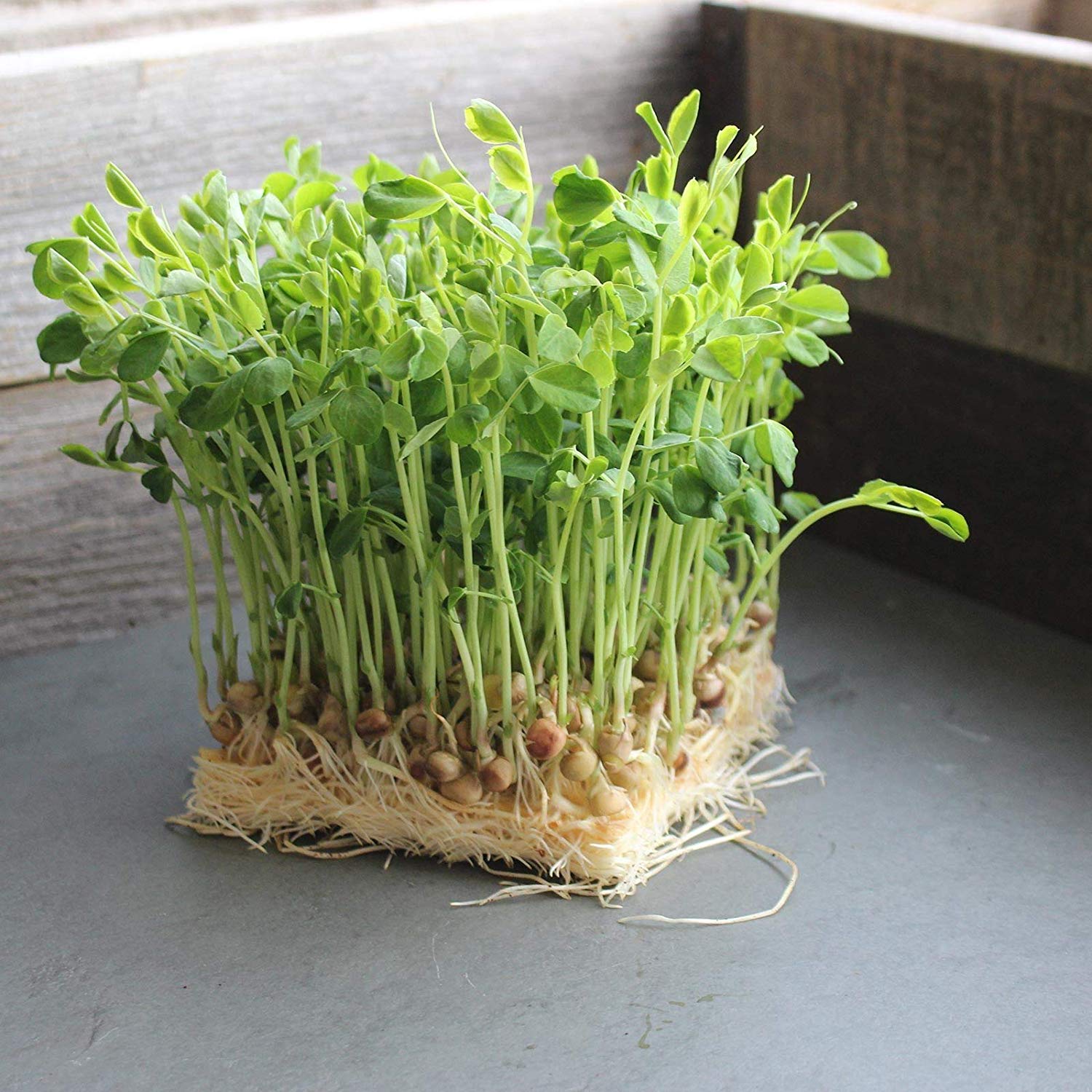 |
|
Pea shoots, are also known as pea microgreens. Pea Sprouts are great in salads and can be eaten shortly after they “pop” or grown on to their first or second set of true leaves. The tendrils add a unique texture while the stems have the same familiar crunch and sweet flavor of full grown peas.
Color: A long stem with a leafy top
Flavor: crunchy, very sweet, fresh (tastes just like peas)
Shape & texture: Stemy, tendrilly, crunchy, succulent
Nutrients: Vitamins: A and C, folic acid, calcium, iron, and fiber |
|
| |
|
|
|
| Spicy Mix |
|
|
|
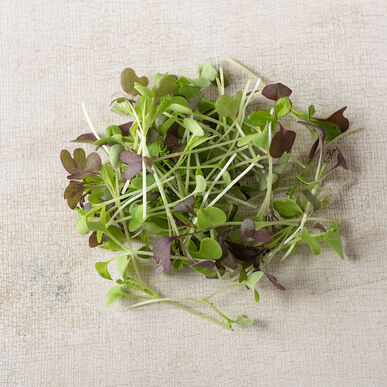 |
|
A flavorful and colorful combination of microgreens that grow well together: Broccoli, Kale, Kohlrabi, Arugula, Red Cabbage & Southern Giant Mustard for an extra kick.
Use: The spicy microgreens salad mix has a great flavor and a nice mix of colors. Spicy flavor pairs well with other varieties of microgreens.
Color: mostly green with purple and red highlights
Flavor: crunchy, nutty, fresh
Nutrients: nice flavor combination with a nice spicy kick
|
|
| |
|
|
|
| Sunflower |
|
|
|
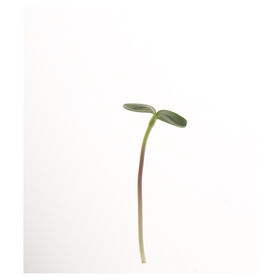 |
|
Sunflowers were first domesticated in the Americas. The name sunflower likely derived from the flower's head's shape, which resembles the sun, because the blooming plant appears to slowly turn its flower towards the sun as the latter moves across the sky on a daily basis.
This microgreen variety produces large, substantial greens that are crunchy and have a pleasant nutty flavor.
Use: Great to use them as a base for any microgreens salad. They make an excellent snack all by themselves
Color: green
Flavor: crunchy, nutty, fresh
Nutrients: Vitamins A, B complex, D, and E, calcium, iron, magnesium, potassium, and phosphorus
|
|
| |
|
|
|
| |
|
Other Varieties of Micro Greens |
|
| |
|
Did you not find your favorite microgreen on this list? Call us to discuss how we can help. (212) 645-1370 |
|